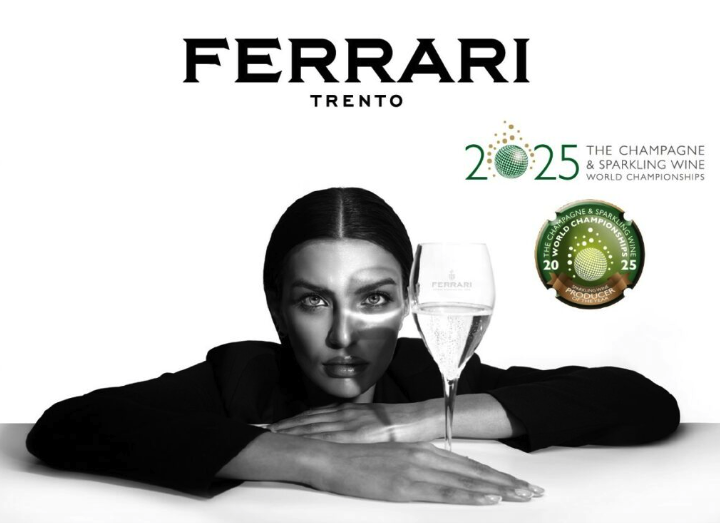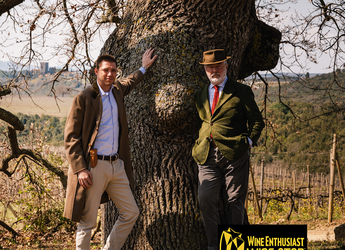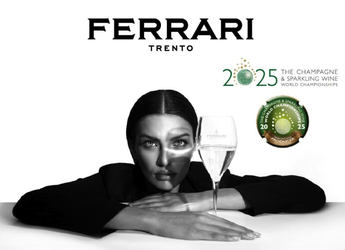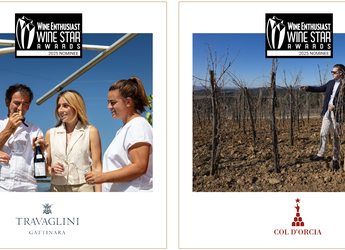
Ferrari Trento Sparkling Wine How One Vision Became an Italian Art Form

He saw it before anyone else did. But then … that’s what pioneers do.
Born and raised in the wine commune of Trentino, Italy (which, at the time, was still a part of Austria), Giulio Ferrari was already extensively trained in viticulture before he traveled to France in the 1890s to hone his winemaking techniques. He became entranced by Champagne and the precise, beautiful rhythms of ritual required to craft their traditional method sparkling wines. Giulio also began noting similarities between the marginal climates of northern France and his mountainous homeland and was convinced he could create an Italian sparkling wine to rival even the best Champagne. So, he quietly carried several Chardonnay vine cuttings back home and planted Italy’s first documented Chardonnay vineyard, Maso Pianizza, in 1897. It was the beginning of a new era for fine wine in northern Italy.
Despite the dubious locals (who’d want bubbles in their wine?), Giulio persisted and built his winery in 1902 in the heart of Trento, producing Italy’s first vintage of traditional method sparkling wine. With no children of his own, Giulio passed the Ferrari legacy on to his dear friend, local wine shop owner Bruno Lunelli, in 1952. An entrepreneur at heart, Bruno not only understood Giulio’s vision, he saw beyond it — over the next few decades, he and his children cultivated the Ferrari name into a symbol of celebration, luxury, and quality. (Bruno’s son, Mauro, even had a hand in the creation of the official Trentodoc region in 1993.)
Now stewarded by the third generation of Lunellis, Ferrari Trento is still the leading light in the region, thanks to the family’s tireless pursuit of excellence and devotion to the dreams of their founder. Matteo Lunelli serves as president; his cousin, Camilla Lunelli, heads up global communications while her brother, Alessandro Lunelli, an engineer by training, is responsible for planning and technical oversight.
Taking their craftsmanship to an exciting new level in 2023, Ferrari’s head of production Marcello Lunelli was joined by famed Champagne chef de caves Cyril Brun, who is now heading up enology full time.
As ambassadors of the “Italian Art of Living” and makers of Italy’s celebratory wine par excellence, the Lunelli family are clearly poised to take fine sparkling wine from Trentino to the next incredible level.

-
Founded
1902 -
Location
Trentino, Italy -
Notable
Sparkling Wine Producer of the Year 2025 (Champagne & Sparkling Wine World Championships) -
Follow On
-
SUSTAINABILITY
Terroir
Three key factors make Ferrari Trento vineyards ideal for growing sparkling wine grapes. First, elevation. Most of Trento’s territory perches at over 1,000 meters/3,280 feet above sea level, far higher than Champagne and easily making up for Trento’s more southerly latitude. Up here, dazzling sunlight and frigid Alpine winds bless the grapes with the perfect levels of acidity and freshness.
Next, soils. They’re rich in calcareous debris and have an elevated siliceous component (mostly from limestone), giving the wines their signature texture. Underpinning the alluvial vineyard composition is a strata of magmatic and metamorphic rock, including schists, gneiss, rhyolite, quartz, and feldspar. These trace lithologies are unique to the region and impart a complex minerality to the wines.
Lastly, topography. Trento comprises a dramatic tapestry of narrow valleys and soaring mountain ranges. This geographical “cardiovascular system” provides consistent wind patterns and a dramatic diurnal shift that runs almost like clockwork. The terrain here is rugged, with vineyards planted on hilly slopes at the base of the soaring Dolomite Mountains.
Viticulture
Sustainability, particularly in the vineyards, is embedded in Ferrari Trento’s DNA. All estate vineyards were officially certified organic in 2017 and the Lunellis have re-instituted historic agronomic practices such as turning cover crops back into the soil (known as green manuring). The estate was also certified as a Biodiversity Friend by the World Biodiversity Association.
“Rediscovering the value of biodiversity is another step that our company has taken in the direction of creating a more natural approach to viticulture and of having a minimal impact to the environment,” says Marcello Lunelli. “The farmer has to transform himself from ‘product supplier’ to ‘custodian of his own land.’”
Thriving beehives and nesting boxes for beneficial birds are now found throughout the vineyards, while the vineyard team have employed sexual confusion tags to keep pests such as grape-munching moths at bay. The estate has also brought on falconers to tackle larger pests.

Traditional, Yet Distinctively Ferrari
Ferrari Trento’s fine sparkling wines are all produced by the painstaking traditional method (aka metodo classico). Owing to the unique Trentino terroir, the wines are known for their remarkably rich textures and intense concentration. Additionally, all Ferrari Trento wines enjoy extended lees aging, giving them incredible depth and complexity.
The Lunellis’ state-of-the-art winemaking facility, which is adjacent to the historic winery, maintains a carbon negative footprint and is cooled by gravity-fed glacial melt.

Sparkling Wine Producer of the Year
Ferrari Trento has been named “Sparkling Wine Producer of the Year” at the 2025 Champagne & Sparkling Wine World Championships — an accolade they’ve received five times in a row — and eight times in the competition’s history.












